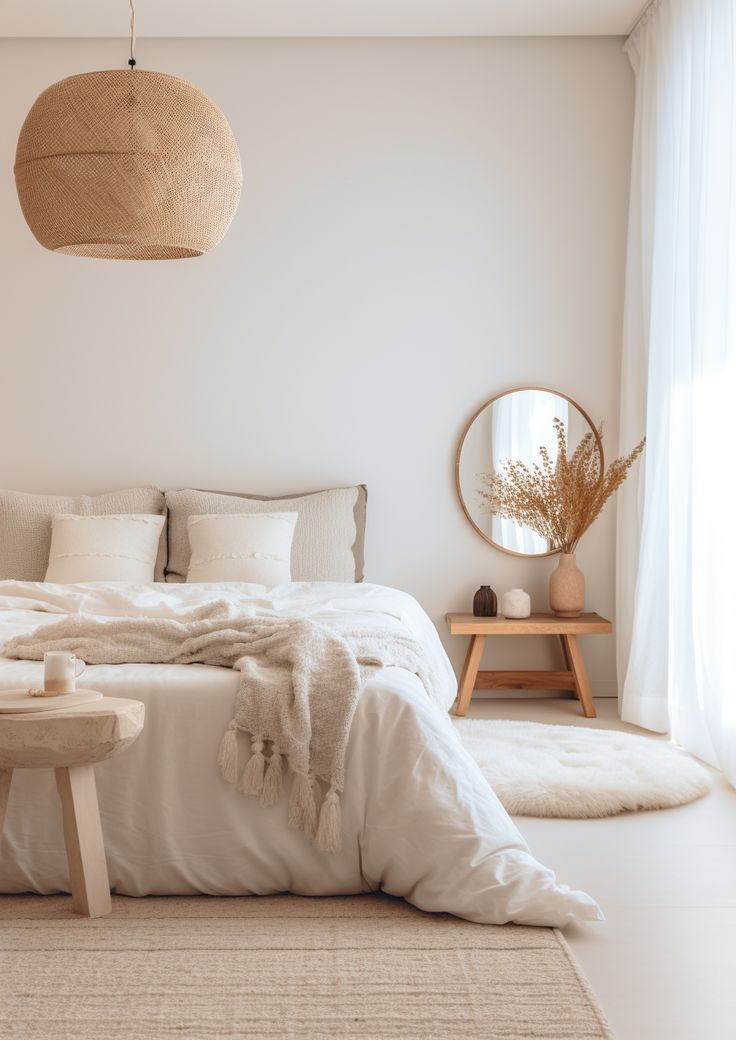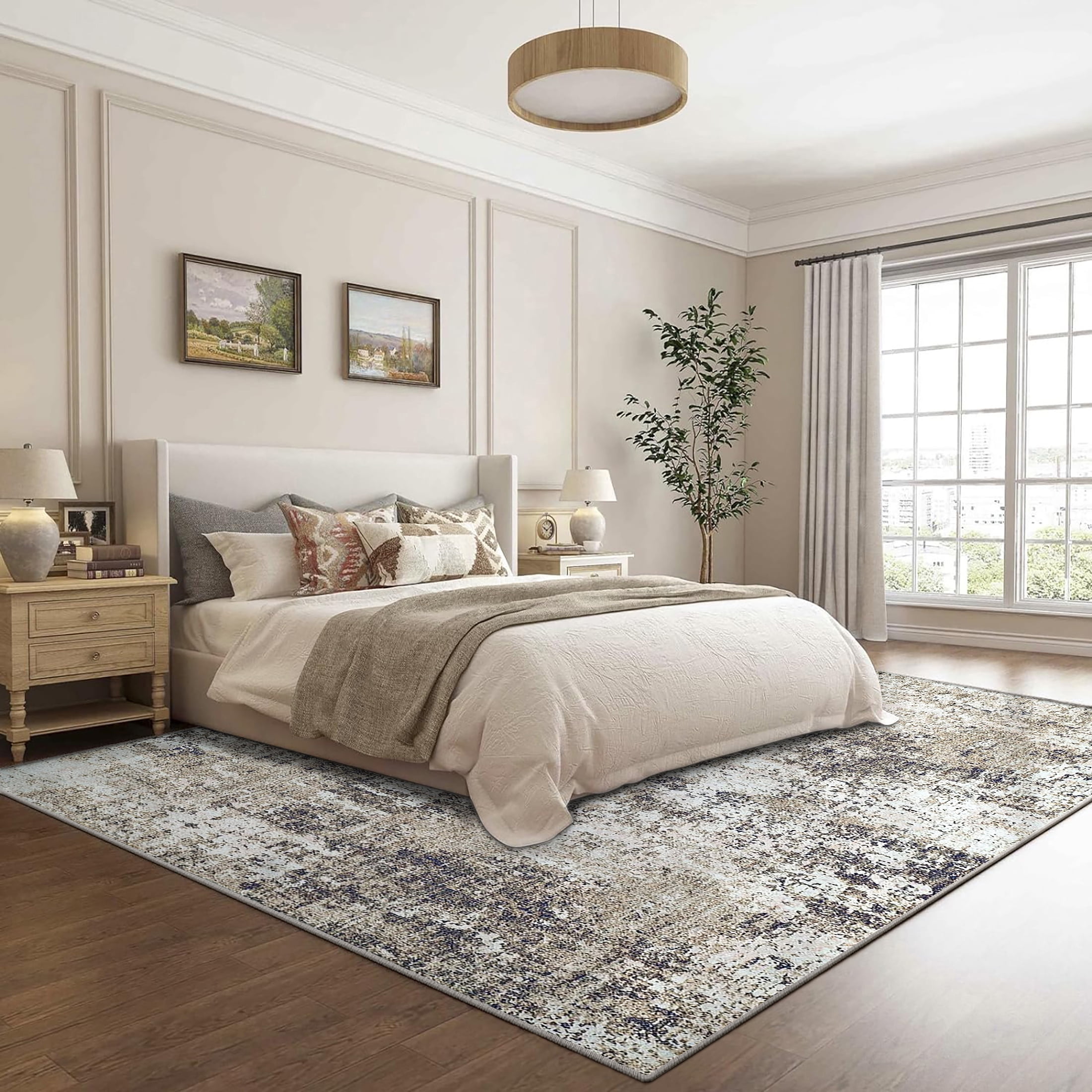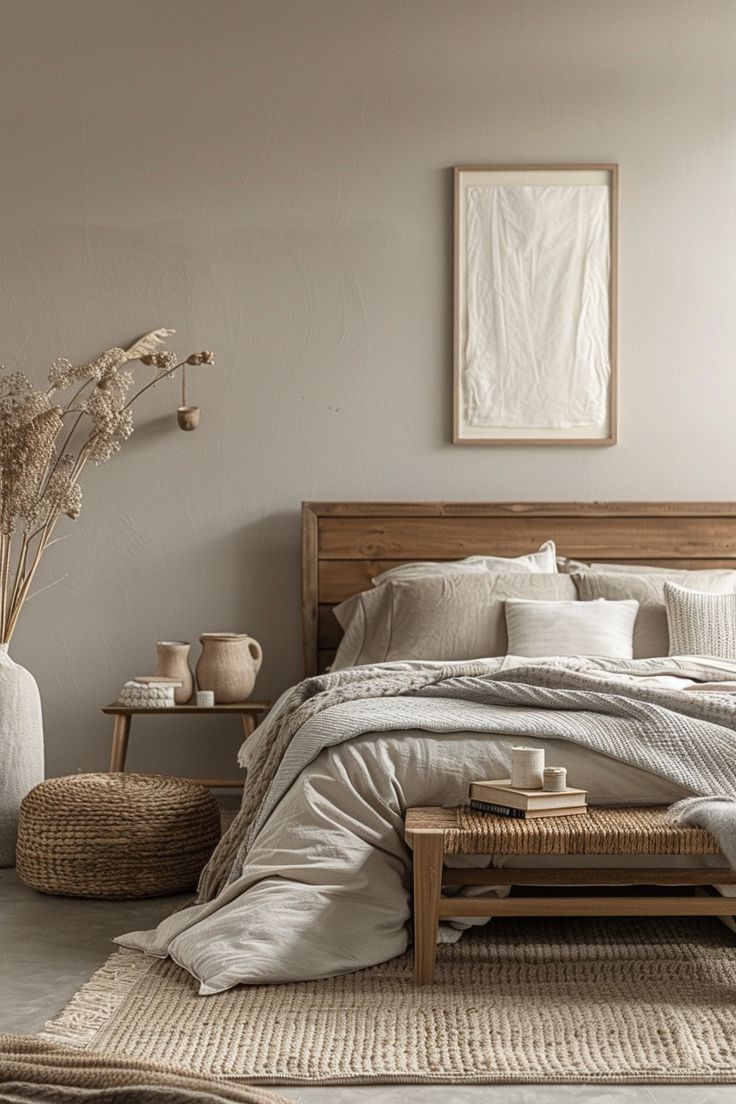Neutral bedrooms are having a major moment, and it’s easy to see why. These earthy, light-filled spaces create a sense of calm that feels especially welcome at the start and end of a busy day. A tranquil environment can make your morning routine feel smoother and your nightly wind-down more relaxing. Plus, a neutral palette provides a timeless foundation that can be easily refreshed with a few pops of color in your bedding or artwork whenever inspiration strikes.
Of course, neutral bedrooms are undeniably beautiful, but as with any monochromatic design, it’s important to incorporate thoughtful details to ensure the space feels inviting and full of character. To help you create a serene and cozy retreat, here are a few simple tips for designing a neutral bedroom you’ll love waking up to and relaxing in.
CHOOSE YOUR BASE COLOR FOR WALLS AND LARGER PIECES
Start by deciding the mood you want for your neutral bedroom: cool and refreshing or warm and inviting. If you lean toward warm and sunny, opt for base colors with red, yellow, or orange undertones. For a cooler vibe, choose shades with blue, green, or purple undertones. Sticking to one tonal family—either warm or cool—ensures a cohesive look. Not sure which to pick? Compare samples against a white sheet of paper or consult a color expert for guidance. Once you’ve settled on a base color, extend it to larger elements like the walls, rug, bedframe, and headboard. While everything doesn’t have to match exactly, aim for complementary hues to maintain harmony throughout the space.
LAYER IN CONTRASTING ACCENT COLORS

After establishing your base, introduce two to three contrasting accent colors to add depth and interest. For example, if your base is a light, warm cream, incorporate deeper tones like rich browns or medium beiges through accent pillows, side tables, bedding, or small décor pieces. Mixing light, mid, and deep tones within your base and accent palette creates visual variety, elevating the overall design.
INCORPORATE TEXTURE
Texture is essential for adding dimension to a neutral space. Since the color palette is subdued, focus on tactile and visual interest through materials. Consider a soft area rug, rattan baskets, a channeled headboard, a boucle accent chair, or a cerused oak console table. The more variety in texture, the more dynamic your room will feel. Don’t shy away from layering textures—this will make your bedroom both stylish and inviting.
ADD COZY, SOUND-DAMPENING ELEMENTS

To create a serene and quiet retreat, incorporate elements that minimize noise. A plush area rug, velvet drapery, and an upholstered headboard—preferably oversized—can help reduce sound and make the room feel more tranquil. Enhance the coziness with soft throws, fluffy pillows, and luxurious bedding. These touches not only soften the acoustics but also make your bedroom irresistibly comfortable, perfect for unwinding at the end of a long day.
INTRODUCE NATURAL ELEMENTS
Nothing completes a neutral bedroom like touches of greenery or nature-inspired décor. Real plants not only purify the air but also bring a sense of calm to the space. If live plants aren’t an option, faux greenery or artwork featuring earthy landscapes can achieve a similar effect. Subtle pops of green function as a neutral while adding a refreshing vibrancy, helping your room feel alive and harmonious.
CONCLUSION
In conclusion, creating a neutral bedroom can be a simple and effective way to achieve a serene and timeless space. By incorporating calming colors, natural materials, and thoughtful lighting, you can transform your bedroom into a peaceful retreat.







